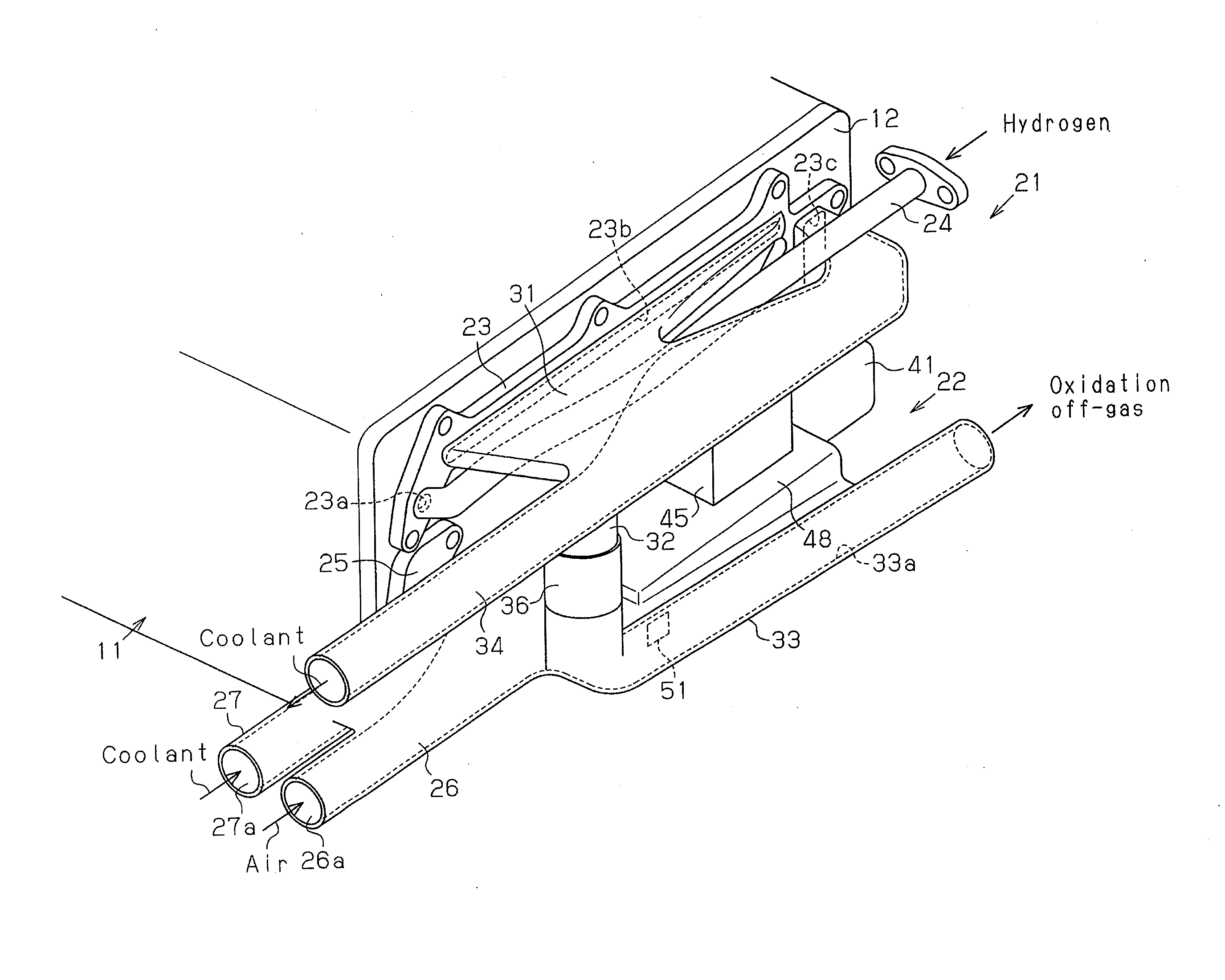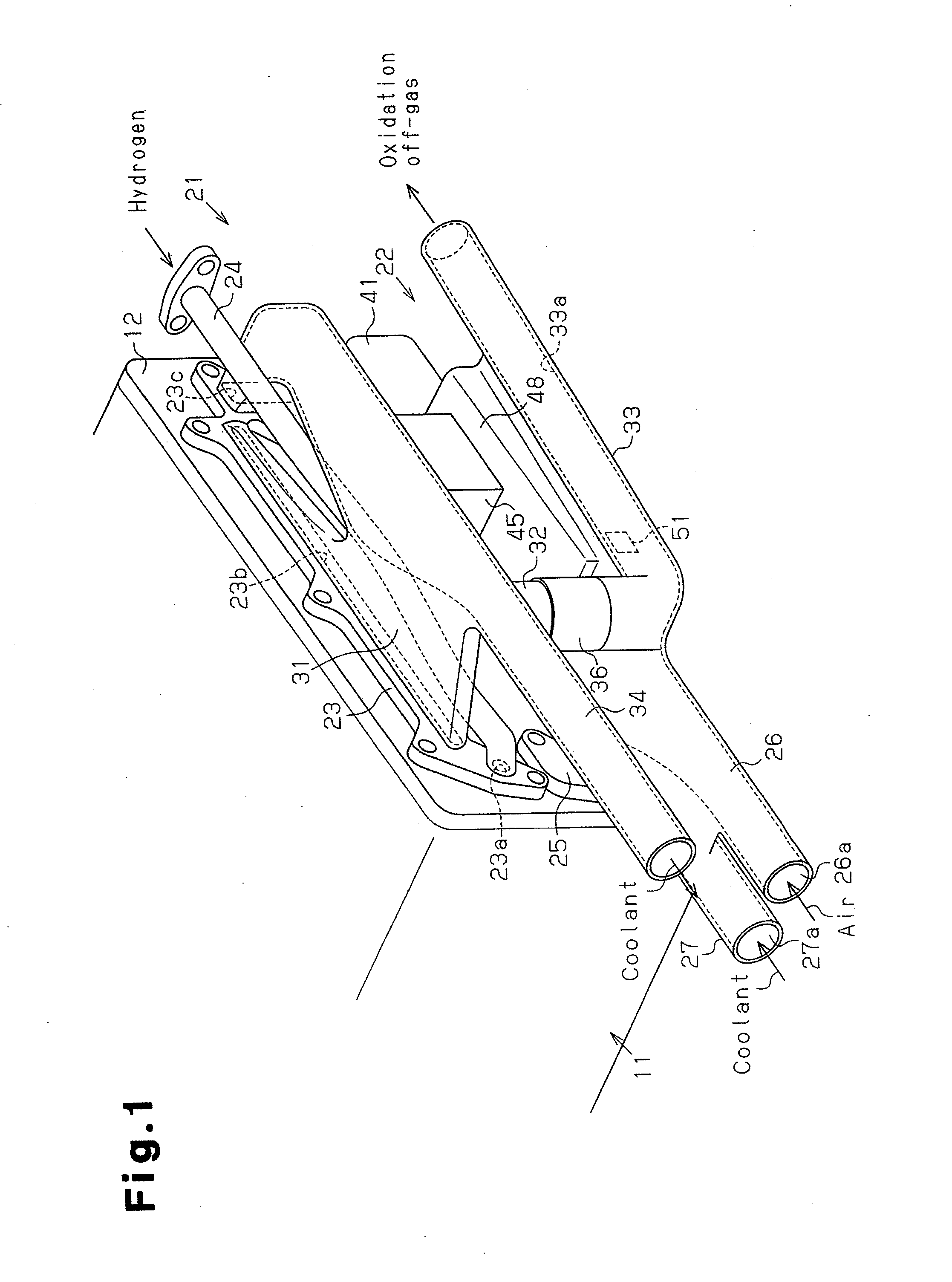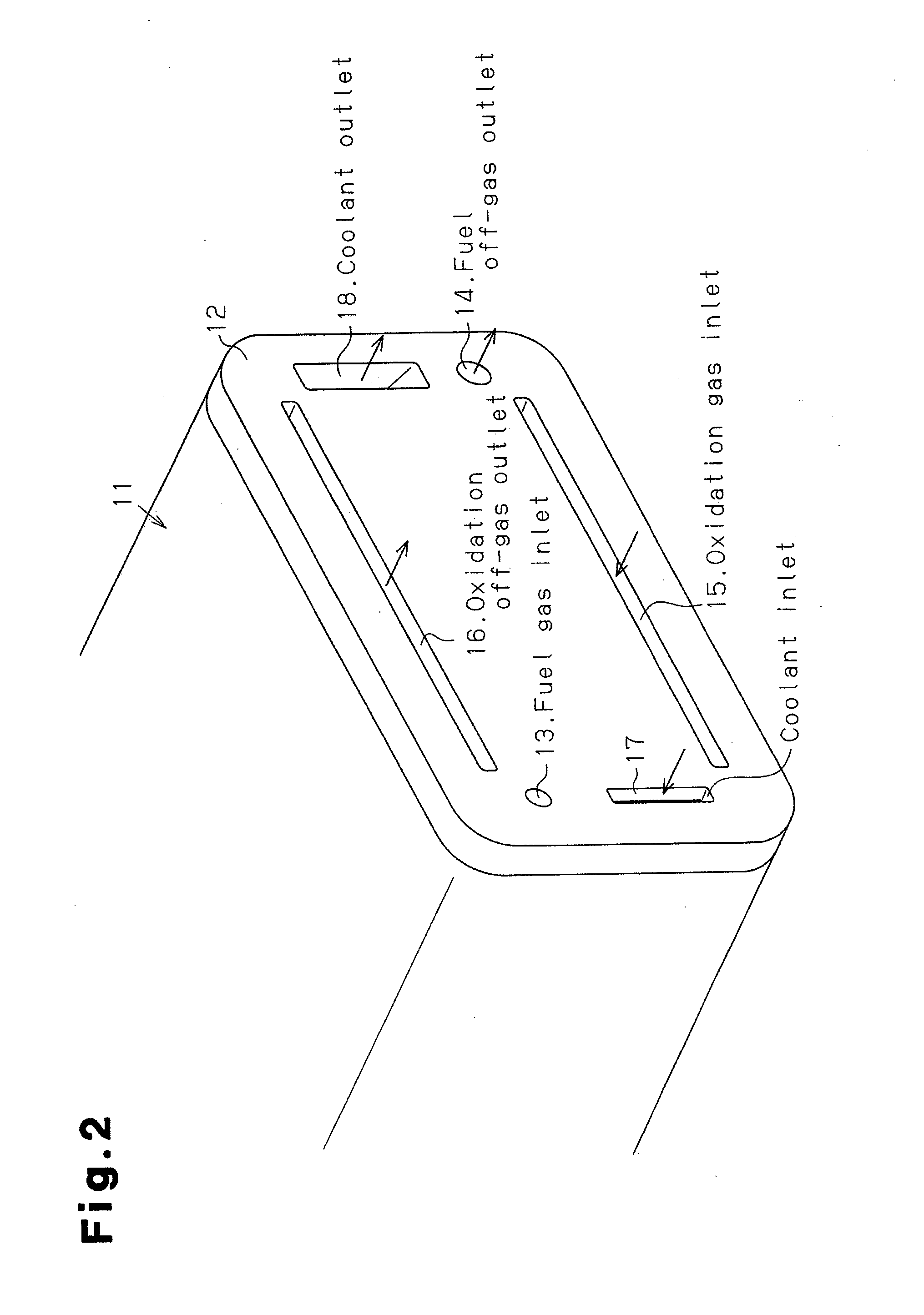Fuel cell system
- Summary
- Abstract
- Description
- Claims
- Application Information
AI Technical Summary
Benefits of technology
Problems solved by technology
Method used
Image
Examples
Embodiment Construction
[0023]A fuel cell system for an automobile according to one embodiment of the present invention will now be described with reference to FIGS. 1 to 13.
[0024]As shown in FIG. 1, the fuel cell system includes a fuel cell stack 11. The fuel cell stack 11 has laminated power generating cells (not shown). Hydrogen gas as fuel gas is supplied to the fuel electrode of each power generating cell. Air (oxygen gas) as oxidation gas is supplied to the oxidant electrode. As a result, through the electrochemical reactions between hydrogen gas and oxygen, electric energy is extracted and the water is generated.
[0025]As shown in FIG. 2, an end plate 12 made of an insulation material is fixed to an end face of the fuel cell stack 11 with bolts (not shown). A fuel gas inlet 13 is formed in a left upper part of the end plate 12. A fuel off-gas outlet 14 is formed in a right lower part of the end plate 12. A laterally extending oxidation gas inlet 15 is formed in a lower part of the end plate 12. A lat...
PUM
 Login to View More
Login to View More Abstract
Description
Claims
Application Information
 Login to View More
Login to View More - R&D
- Intellectual Property
- Life Sciences
- Materials
- Tech Scout
- Unparalleled Data Quality
- Higher Quality Content
- 60% Fewer Hallucinations
Browse by: Latest US Patents, China's latest patents, Technical Efficacy Thesaurus, Application Domain, Technology Topic, Popular Technical Reports.
© 2025 PatSnap. All rights reserved.Legal|Privacy policy|Modern Slavery Act Transparency Statement|Sitemap|About US| Contact US: help@patsnap.com



